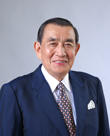Should We Eat Bread Today or Plant an Apple Tree for Tomorrow?
Summary of the 2021 Tokyo assembly election
Nobuo Sasaki
Professor Emeritus, Chuo University
Area of Specialization: public administration and local governmental autonomy
There's a saying that goes: "Even if I knew that tomorrow the world would fall to pieces, I would still plant my apple tree." The 2021 Tokyo assembly election was held on July 4. Was that the battle needed to shape the future of Tokyo? The focal point of the election centered around the Tokyo Olympics and measures to combat the COVID-19 pandemic. Tokyo's governor, Yuriko Koike, who is usually fond of elections, oddly only showed up on the final day.
Due to the ongoing COVID-19 crisis, this election was dubbed the "election without a handshake" and as the "election without issues of contention." However, it was, without a doubt, a crucial election that will pave the way for the next four years of Tokyo. Some even called this the preliminary to the national election. I'd like to summarize the largest capital city election in Japan and comment on it from my perspective.
A battle without a victor
First, let's go over the results. A total of 271 candidates ran for 127 seats, the largest number in history. The Liberal Democratic Party won 33 seats, Tomin First no Kai won 31 seats, Komeito won 23 seats, the Japanese Communist Party won 19 seats, the Constitutional Democratic Party of Japan won 15 seats, and members of other parties won six seats. Out of all those elected, 26% were newcomers, and 32% were women, which were higher than other local elections.
Tomin First no Kai, which Koike led to victory four years ago with 55 seats, fell back to 31 seats. The LDP, which suffered defeat and only won 23 seats at the time, returned as the top party with 33 seats. Komeito, which had continued to defend its 23 seats, won again for the eighth time in a row. The power structure of the Tokyo Metropolitan Assembly changed dramatically overall, with results such as the rise of the Constitutional Democratic Party of Japan, which increased its seats from eight to 15.
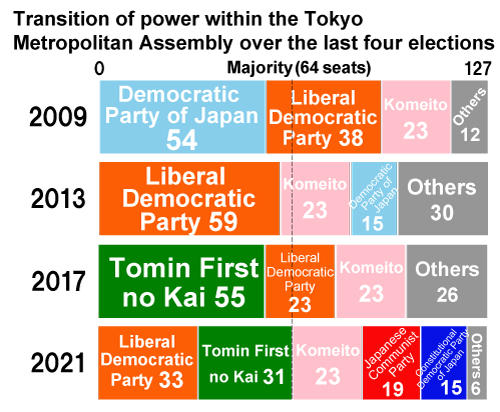
As you can see by looking at this figure, the Tokyo assembly election is a strange election where the pendulum swings back and forth every four years, from non-LDP in 2009, to LDP in 2013, back to non-LDP in 2017, and again to LDP in 2021. The non-LDP party changes with each swing, such as the Democratic Party of Japan and Tomin First no Kai. Since the LDP won only by a narrow margin in this election, it is not as simple as saying that the assembly alternates consistently between LDP and non-LDP, but there is certainly a type of pendulum effect in action. In the past, non-LDP forces that have emerged as the leading party tended to be elected only once and would lose in the next cycle. As a result, the Tokyo Metropolitan Assembly can often seem like a group of amateur politicians.
Why does this pattern perpetuate? In Tokyo, where more than half of the electorate is made up of people who are not affiliated with any party, votes are cast every four years in hopes of something new or something entertaining, with people viewing politics as theater. This may be the reason for this pendulum phenomenon.
We are like the wind searching for the bluebird of happiness; although, sadly, there really is no bluebird. Four years ago, the Party of Hope (Koike's newly founded party) launched a national election campaign right after Tomin First no Kai won its major victory, which turned out to be a devastating defeat, closer to be described as the Party of Disappointment rather than the Party of Hope. However, nobody seems to have learned their lesson since then. That may just be the nature of the electorate of a major city. In this election cycle, there was no promising wind. It is safe to say that there was no real winner in this election.
The total number of eligible voters in this election was the highest ever, at 11.51 million, but the turnout rate was the second lowest in history, at 42.39% (compared to 51.28% in the last election). However, it is worth mentioning that 41 women were elected, more than the previous election (36), and it was the highest number to date. This is something that you will not see in other local elections.
What was at stake in the Tokyo assembly election?
This year's Tokyo assembly election called into question the current state of Tokyo, as the spread of COVID-19 brought the issue of the "three Cs (closed spaces, crowds, and close contact)" into focus. In addition, Tokyo is rapidly moving toward a super-aging society, in which people and infrastructure are aging at an unprecedented pace. The election was held at a time when a number of issues were at the forefront, including a major earthquake that has a 70% chance of directly hitting Tokyo in the near future, torrential rains and other increasingly severe disasters, the spread of a mutating infectious disease, a declining birthrate, the need for a better child-rearing environment, the struggles experienced by small and medium-sized businesses, and the need to rebuild the economy.
However, the debates that we saw were all about short-term COVID-19 measures, such as topics surrounding the Tokyo Olympics that will be held in two weeks, vaccinations, increased COVID-19 relief payments, and regulations surrounding the food service industry.
There were no talks of planting apple trees for the future--only about the bread we need for today or tomorrow. In this election, we did not ask the questions we needed to ask.
In fact, this state of affairs surrounding the election may not be unique to the Tokyo assembly election. It may be a trait of Japanese politics as a whole for the past 10 or so years. The current Suga administration, like his predecessor Abe, whose long tenure lasted seven years and eight months, seems to be focused only on what is right in front of us today, and not on what lies ahead tomorrow. On top of that, they go back on their decisions often, with no clear goals in mind. They seem to be mostly engaged in a sort of inane, day-to-day chatter that you overhear in the city streets. Even as citizens suffer from the COVID-19 crisis, they have no plans of implementing fundamental reforms to address the overconcentration of people and resources in Tokyo. All we hear is how the vaccine rollout will be a month earlier, how spectators will attend the Tokyo Olympics, and how society will change by getting rid of hanko seals, which is their idea of a digitization policy.
After that, they suddenly began talking about a decarbonized society in 2050, which is 30 years from now. Can they really make such claims in a responsible manner? The Japanese government today feels like a cavernous entity--a government with only a head and a tail, but with no body. The Tokyo assembly election is often seen as the leading indicator of national politics, but in fact, they seem to be one and the same. There seem to be no prospects for the future. Five billion yen in public funds was spent on the Tokyo assembly election, but the opportunity for a meaningful debate was squandered. The election was little more than a glorified public opinion poll, which is something that is truly regrettable.
In any case, as Japan continues with its day-to-day politics and its management of the nation without a coherent vision, it is falling behind the rest of the developed world and is well on its path to becoming a second or third-rate nation in both the digital and economic spheres. Instead of being on par with global cities like New York, London, and Paris, Tokyo is becoming a mere regional city somewhere in the Far East. This is truly a crisis for Japan. Rather than taking small measures to address the declining birthrate, we should aim to build a nation where citizens, especially young people, can pursue big dreams, which I believe is the foundation of a society where many children are born.
The immediate issues facing Tokyo after the assembly election
Moving on from the topic of the election, there is actually another pendulum effect that can be observed in Tokyo politics. I call this the "Tokyo political pendulum principle."
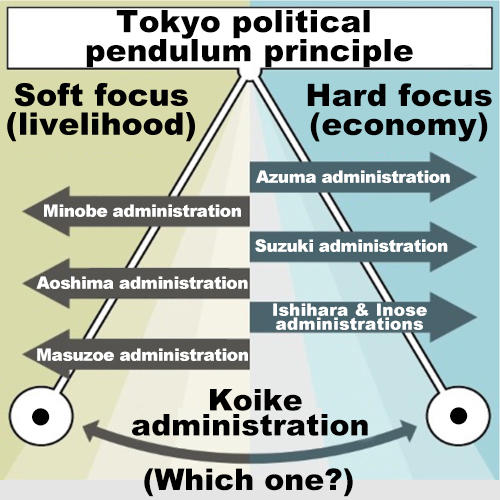
Historically, in Tokyo, the focus of the metropolitan government switched between a "hard" focus and a "soft" focus with each governor. At the time of the Tokyo Olympics (1964), Ryotaro Azuma focused on the economy, while his successor Ryokichi Minobe focused on welfare, education, and other aspects of public services. We went back to the "hard" focus with Shunichi Suzuki, then back to the "soft" focus with Yukio Aoshima, then again to the "hard" focus with Shintaro Ishihara. It can be said that the citizens of Tokyo have been going back and forth with each election to prevent the political leaning from going too far in one direction. However, since the Koike administration was put in charge five years ago, we stopped seeing this pendulum in action. The government's stances on policy are unclear. Postponing the relocation of the Tsukiji Market to Toyosu that was planned under the Ishihara administration made headlines, reconsidering the Olympic venues sparked controversy, and the Rainbow Bridge was lit in rainbow colors in a performance meant to address the COVID-19 crisis. Although polls show that Koike's approval rating is close to 50%, what is the real picture of the current metropolitan government?
One up-and-coming member of the Diet, who was recently a member of the Tokyo Metropolitan Assembly, described it this way.
"My evaluation of the Koike administration is 30 points. She hasn't fulfilled her public pledge. It's clear that the great reform of Tokyo set forth by Governor Koike hasn't been achieved. Even the policies surrounding the Olympics and COVID-19 are too focused on political performance, rather than the interest of the people of Tokyo."
I agree with this assessment. There is a large gap between pretense and reality. This may be the most characteristic trait of the Koike administration. It is the role of the Tokyo Metropolitan Assembly to decide on the budget, ordinances, and other key elements of the metropolitan government. The focus moving forward will be on how the newly elected members of the Tokyo Metropolitan Assembly will correct course and move the pendulum under their political leadership.
For the time being, the core issues involve ending the COVID-19 crisis and recovering the livelihoods of the city's residents and their business activities, which have suffered greatly. What is needed is a shift toward the "soft," livelihood-oriented focus. I do not know how the Tokyo Olympics will turn out, but it is about to start soon. It was a point of contention in the election, but it is mostly meaningless at this point. The new assembly members will serve a four-year term. We need to put an end to the Olympics-focused, event-oriented, and performance-obsessed metropolitan government, and focus our energy on the issues facing the lives of the people of Tokyo as we move forward.
The medium- to long-term issues facing Tokyo after the assembly election
It is calculated that one Tokyo Metropolitan Assembly member is elected to represent 100,000 residents. This may be the result of that, but assembly members tend to talk only about their local constituents and gotochi songs (songs featuring local attractions). However, politics in the capital does not work like that. With a budget of 15 trillion yen, which is the same size as the country of Sweden, and 170,000 government employees, how will they manage the metropolis of Tokyo?
One of the main medium- to long-term challenges facing Tokyo is to fully address the problem of the aging population. In four years, all baby boomers will be over 75 years old, and Tokyo will be aging at an unprecedented rate. People will age, as will the infrastructure. As people age, services like medical care, nursing care, pensions, and other forms of social security will become more difficult to manage. Tokyo, which has always maintained its image as a city of young people, may rapidly age and lose its vitality. In addition, Tokyo has a much larger elderly population than any other city. There are not enough facilities. In addition, the city's infrastructure, such as roads, water and sewage systems, and public facilities, which were developed in concentration in the past 50 years, are now aging. It takes a large amount of money and labor to maintain this infrastructure, whether it means renewing or discarding.
In order to raise the money that we need, strong administrative reform is necessary. How we tackle the problem of the aging population and infrastructure will be the main challenge facing the Tokyo Metropolitan Government moving forward. The Koike administration must not run away from this.
The second challenge is to solve the problem of the overconcentration of people and resources in Tokyo. Due to the effects of COVID-19, remote work is becoming normal and more people are now working from home. Many people are now leaving the city, but the overconcentration of Tokyo still continues. We must not lose sight of the real danger just because we see a slight improvement. The "three Cs" in homes, commutes, workplaces, and restaurants are one of the major causes of the spread of COVID-19, and we are now at our limit. In the past, we were worried about overcrowding in the context of natural disasters such as a major earthquake directly hitting Tokyo, but now, we must also contend with unknown infectious diseases.
The post-war metropolitan government has always enabled Tokyo to grow larger, but it is time to restrict this growth and shift to policies that enhance quality rather than quantity. The era of expanding Tokyo is over. Labor productivity is already well below the national average. The risk of excessive crowding is a major threat. In order to create a new Tokyo, I think the lives of the people of Tokyo and Japan as a whole would improve if Tokyo were to shrink by about 20%.

The concentration of people and resources in Tokyo may seem impressive, but it also comes with a concentration of risks (see figure). We should reduce people, companies, and universities by 20%, and move them to other areas in Japan. I believe the time has come to put forth serious proposals on policies to achieve this. To encourage this, why not make bullet trains, highways, and flights practically free? Japan is barely the size of California, a single state in the US. Fortunately, though, our three major high-speed transport networks are superbly maintained, and it does not take too long to go from one end of the country to the other. The challenge is the money (passenger fares). This transportation expense serves as a barrier, keeping people and companies from moving away. This is a problem that we must solve.
The national and metropolitan governments should pay for the cost of bullet trains and expressways, and bring the cost down to the same level as regular local fares. The metropolitan government should contribute a portion of the redevelopment cost to public expenditure. Rather than spending money on redeveloping Tokyo, where there is little land, is overcrowded, and is expensive, the money should be distributed to a wider area to benefit both the city and its residents.
Even if a company's headquarters is located in Tokyo, if satellite offices are built in the other core regional cities, young people will naturally move out to those cities. The Greater Tokyo area will expand to include Sendai, Niigata, and Nagoya, and these young people will be followed by their aging parents. This will remove some of the overconcentration in Tokyo, as naturally as water flowing downhill.
The third challenge is restoring the governance of the metropolitan government. The Tokyo Metropolitan Assembly and the governor are supposed to be two halves of a whole. However, we now have a structure in which power is concentrated with the governor. Since last spring, the metropolitan government has repeatedly formed supplementary budgets to raise funds for projects, such as relief payments for establishments that shortened their business hours and funding support for medical institutions that handle COVID-19 cases. These efforts have bypassed the assembly and were enacted by fiat by the governor alone. In just over a year, there were a total of 13 such executive decisions made, with costs rising to 1.7 trillion yen.
These executive decisions regarding funding still need to be reported and approved by the assembly after the fact, but even if approval does not go through, it cannot invalidate the budget. Some people on the administration side have stated that waiting for a resolution will inevitably delay the process, so they have no choice but to issue a series of executive decisions, but shortcutting this process is a mistake. For example, the 370.8 billion yen that was appropriated by the administration at one time in May is equivalent to the annual budget of Tottori Prefecture (about 360 billion yen). It was decided by the governor alone, and the cumulative total of the costs of these decisions was 1.7 trillion yen. This is on a scale larger than the total annual budget of Miyagi Prefecture (about 1.5 trillion yen). It is unacceptable to make decisions regarding such large sums of money without deliberation by the Tokyo Metropolitan Assembly.
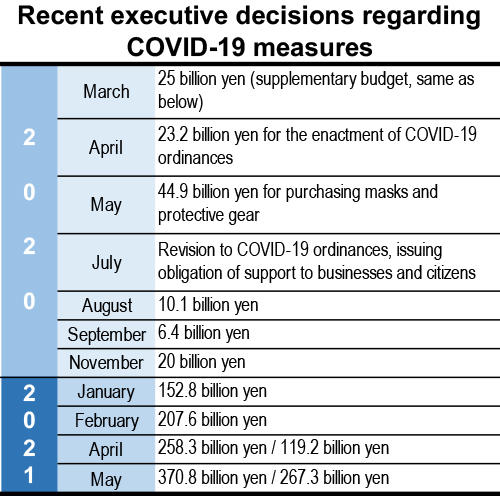
Executive decisions are meant to be exceptional measures for urgent expenses, such as torrential rain disasters, or in urgent cases where there is no time to convene the assembly. Even in the context of the COVID-19 crisis, it is extraordinary that so many executive decisions are being made repeatedly. The fact that this has become the norm in Tokyo politics is basically a sign that the Tokyo Metropolitan Assembly has abandoned its own oversight function and decision-making authority.
After the Tokyo assembly election, we need to break away from this overconcentration of power in Governor Koike's office. If the LDP, Komeito, and Tomin First no Kai are considered to be the ruling parties whose influence has expanded and strengthened, the purpose of the Tokyo assembly elections will become vague, as will the discretionary function of the Tokyo Metropolitan Assembly. The metropolitan government must not be composed entirely of the ruling parties. The very foundation of Tokyo's parliamentary democracy is being questioned.
The Tokyo Metropolitan Assembly should be the leader of Japan's local assemblies. I sincerely hope that the Tokyo Metropolitan Government will break away from this current situation where it has become overshadowed, with decision-making power concentrated on one person, and where government management has become a black box.
Nobuo Sasaki
Professor Emeritus, Chuo University
Area of Specialization: public administration and local governmental autonomyNobuo Sasaki was born in 1948. He graduated from the Graduate School of Political Science at Waseda University and earned his PhD in law at Keio University. After working at the Planning and Deliberation Office of the Tokyo Metropolitan Government for 16 years, he taught as a professor at Seigakuin University in 1989 and at Chuo University Faculty of Economics from 1994 to 2018.
During this time, he worked as a visiting researcher at the University of California and taught as a lecturer at Keio University, Meiji University, Nihon University, Saitama University, and Tamagawa University. He was a member of the Local Government System Research Council (the 31st term), a member of the Science Council of Japan (the 22nd and 23rd terms), and a special advisor to the Osaka prefectural and municipal governments.
Currently, he is a professor emeritus at Chuo University, a guest professor at the Graduate School of Project Design, a special advisor to the Osaka prefectural and municipal governments, and the board chairman of the Nihon Kunizukuri Kenkyujo (the Japan Nation Building Research Institute).
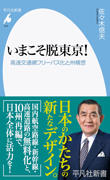
His most recent publication is Ima Koso Datsu-Tokyo! (Now is the Time to Leave Tokyo!) Heibonsha Shinsho (May 2021). His other publications include: Kono Kuni no Tatamikata (How to Reform This Country), Shincho Shinsho; Aratana 'Kuni no Katachi' (The New 'Shape of Japan'), Kadokawa Shinsho; Oiru Tokyo (Aging Tokyo), Kadokawa Shinsho; Nihon Gyoseigaku (Public Administration in Japan), Gakuyo Shobo; Chiho Giin no Gyakushu (The Revenge of Local Assembly Members), Kodansha Shinsho; Tochiji (The Tokyo Governor), Chuko Shinsho; and Tocho—Mo Hitotsu no Seifu (The Tokyo Government Office—Another Government), Iwanami Shinsho.
He also makes many television appearances, writes commentary in newspapers, and gives public speeches.
